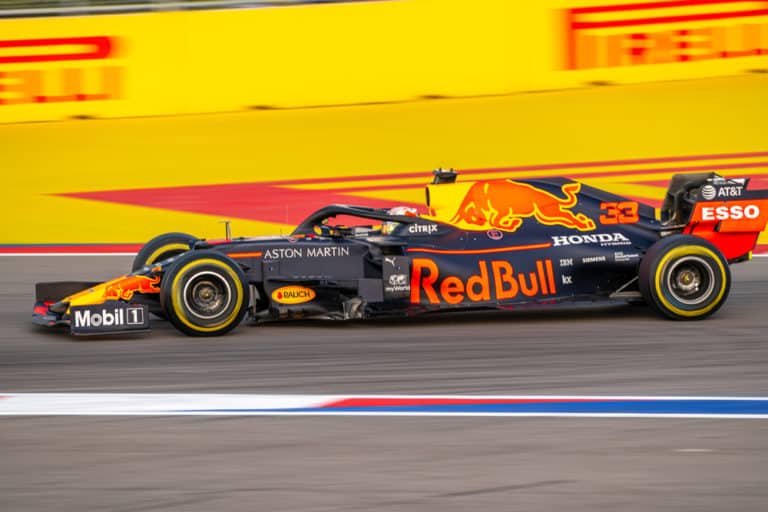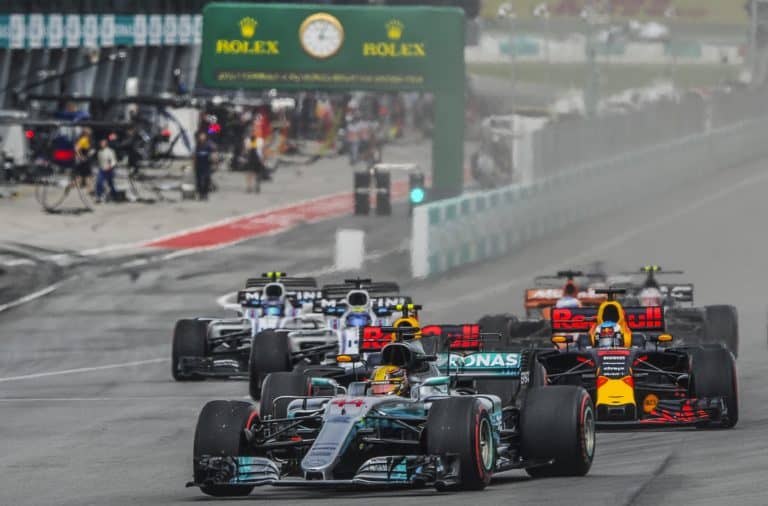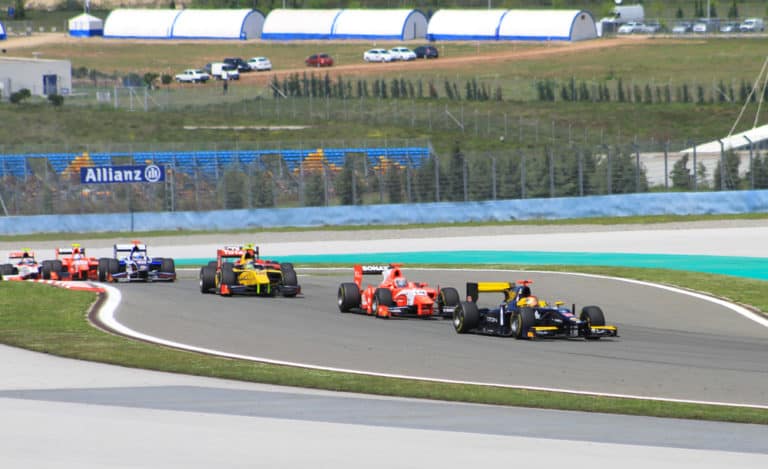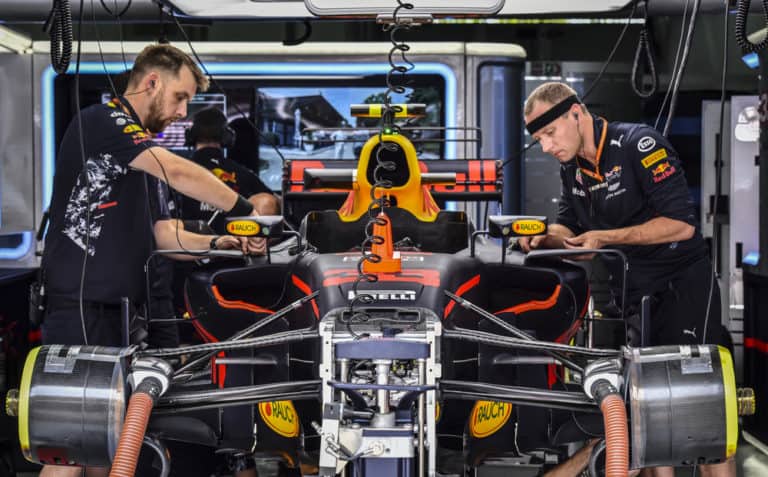Formula 1 is a brutal sport when it comes to drivers’ health. They face punishing g-forces from the acceleration and deceleration forces and lateral loads, which punish their head and neck. They wear two layers of clothes which include a fire-retardant suit and their racing suit, and experience cockpit temperatures of 140 degrees Fahrenheit (60 degrees Celsius)
Formula 1 drivers burn, on average, 1500 calories per race. The number of calories lost per race will depend on the length of the race, the speed of the track, the track conditions, and the weather. Each driver loses, on average, between two and four kilograms per race.
Even super-fit people would battle to survive in an F1 cockpit for more than an hour at a time. Not only are the temperatures so extreme and the forces the driver bodies are subjected to so high, but they also must maintain an ice-cold concentration and razor-sharp reaction times while using all their acquired skill to pilot a Formula1 car at unbelievable speeds.
If you’re looking for some F1 merchandise, check out the awesome stuff at the official F1 store here.
Formula 1 Drivers Burn 1,500 Calories On Average
Apart from having the required levels of skill Formula, 1 drivers operate at almost superhuman levels.
- They must genuinely be the best drivers.
- They must have strict control over their mind.
- They must think about achieving the long-term goal while fighting very tactical battles.
- They must be amongst the fittest athletes.
- They need to multitask while piloting a car at 220mph (350 kph)
What Does A Formula 1 Driver Face?
Formula 1 drivers operate at discomfort levels almost unheard of anywhere else compared to any other motor racing sport. The following lists what the Formula 1 driver faces in each race.
Everything Around A Formula 1 Driver Is Hot
A formula1 car is designed for speed, not comfort, and the driver sits in the middle of heat-generating components.
- The primary heat produced by the car is by the engine, and it sits directly behind the driver. At the point of combustion, a formula 1 engine generates heat of 4700 degrees Fahrenheit!
- The driver sits in the middle of four wheels. Each wheel is equipped with tires that only work when they reach 200 degrees Fahrenheit.
- Of course, the car needs to slow down, and obviously, it has very effective brakes to achieve this. The brakes only start working efficiently; they must be at a temperature of 200 degrees Fahrenheit. When working at maximum capacity, their temperature can be as high as 1800 degrees Fahrenheit.
- The exhausts produce heat, and although it is routed out of the rear of the Formula 1 car, they still make masses of heat.
- Added to the above, on a hot day, when the race starts in the early afternoon when the sun is overhead, all its heat is directed at the cockpit and the poor driver.
On a hot day, a Formula 1 car’s cockpit temperature can be 140 degrees Fahrenheit (60 degrees Celsius).
The driver isn’t allowed to strip off and wear cool clothes. Their outfit consists of the following fashionista items.
- A fire retardant suit.
- Their racing overall is made of four-layered Nomax fire-resistant material.
- T-Shirt, briefs, and socks made from Nomax.
- Fire-resistant racing shoes are made of padded leather and Nomax.
- Gloves are made of two-layer Nomax and layered with leather.
- A fire-resistant balaclava made of Nomax.
- Some drivers wear knee and ankle protectors to prevent bruises.
- The trademark helmets.
So the drivers now move to the gird line and sit in the Formula 1 cars in the blazing sun, waiting for the race to start.
The start lights go off, and the race is on. For the next few hours, the drivers must operate at levels of unbelievable endurance.
They must pilot their Formula 1 car at speeds of up to 220 mph (350 kph). During the race, they will regularly experience fore and aft g-forces of up to 6g. That means a driver who weighs 80kgs will weigh up to 420 kgs during the race.
- After breaking from a high-speed straight, he will be experiencing 6g’s pushing him towards the front of the car.
- At the same time, he will have to turn, perhaps through a right then left s-bend, and he will be subject to lateral g-forces of up to 2g’s against his left side, and then as he turns through the left-hand portion, he experiences the same 2g’s but now on the other side of his body.
- Finally, he will accelerate out of the corner and be subject to a g-force pushing him backward.
The following is an example of one lap at the Albert Park Circuit in Melbourne, Australia; the driver must turn through 10 right-hand corners and six left-hand corners over the 5.3 km of track. They travel at full throttle for 3.5 km of that track.
That means, throughout a 58-lap race which will last for just under eighty minutes, the driver will
- Brake 928 times and be subject to the maximum braking g-forces
- Accelerate 929 times and be subject to the total accelerating g- forces
- Turn left-hand corners 348 times and experience lateral g-forces to his right-hand side
- Turn right right-hand corners 580 times and experience lateral g-forces to his left side
While doing this, he has to use high mental energy levels, which also burn calories.

How Do Formula One Drivers Cope?
The calories a Formula 1 driver loses due to heat, the punishing forces his body is subjected to, and the mental energy required to pilot his Formula 1 car while in the company of 19 other drivers and their Formula 1 cars are very high.
- To deal with these drivers must be superbly fit and strong.
- To cope with the loss of liquid during a race, drivers will drink up to 3.5litres; this only replaces lost fluid.
- To cope with the loss of nutrients, his medical team will ensure that he is sufficiently hydrated and that his body has all the nutrients it needs before the race.
- Each driver has coping skills to deal with the mental demands the race will make of him.
Conclusion
Watching Formula 1 racing cars challenging each other at incredible speed is visually stimulating and emotionally charged. Without programs to ensure the driver’s health, the 1,500 calories that a driver loses during an hour and a half of racing could add up and cause dehydration and other issues for him.
With rigorous training exercises, careful hydration management, and mental acuity, the driver stays able to perform at the top of his game.






